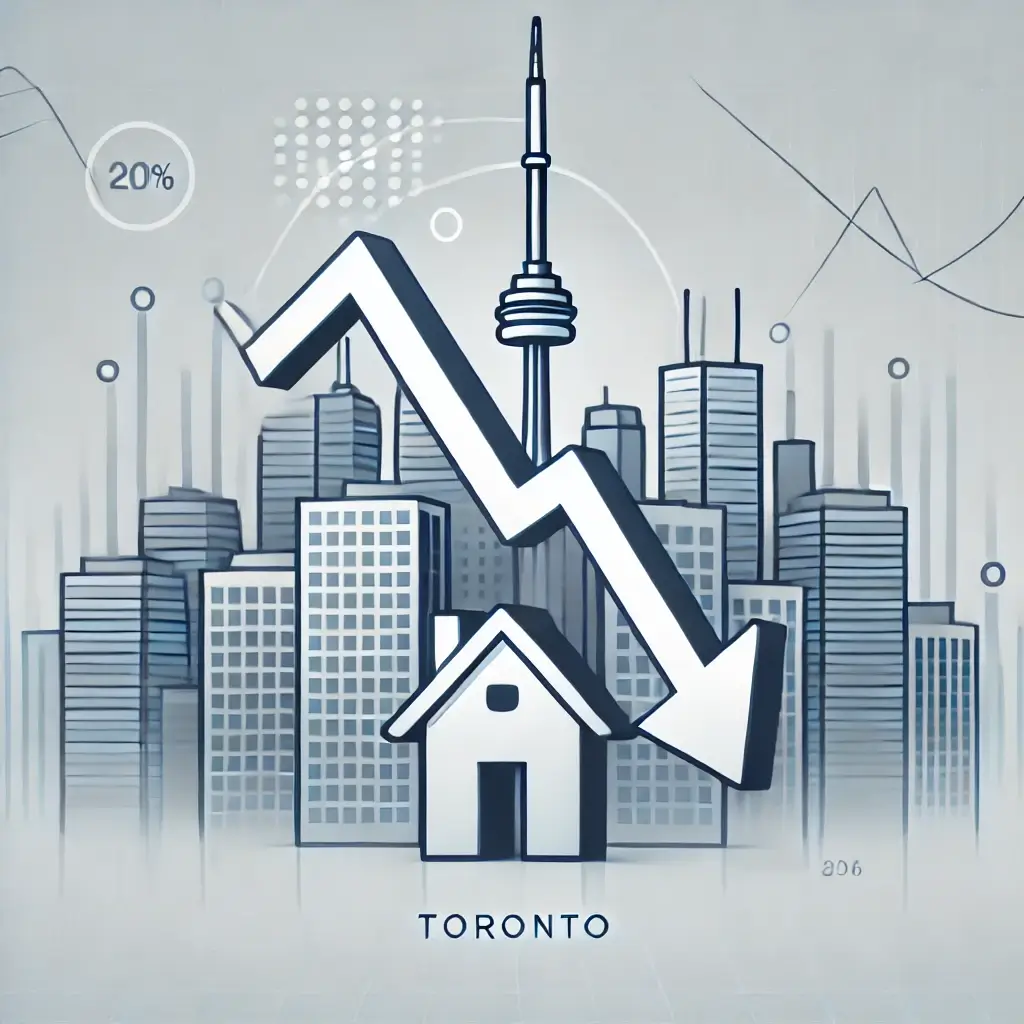The Toronto real estate market is buzzing once again, with home sales surging by 1.9% month-over-month and an impressive 40% year-over-year increase in November 2024. These figures not only signify a strong recovery from previous market slowdowns but also highlight a renewed confidence among buyers and investors.
In this blog, we’ll explore the reasons behind this growth, the impact on different market segments, and what it means for buyers, sellers, and investors in Toronto. From policy changes to shifting buyer behavior, let’s dive into the key factors shaping the current real estate landscape.
The Numbers Behind the Surge
Sales Volume
- November 2024: 6,500 homes sold in the Greater Toronto Area (GTA), marking a substantial improvement compared to November 2023.
- Condo Market: Condos led the recovery, with sales increasing by 45% year-over-year, driven by affordability and lifestyle preferences.
- Detached Homes: Sales of detached properties rose by 35%, particularly in suburban areas like Vaughan and Mississauga.
Price Growth
- Average Home Price: Reached C$1.14 million, a modest 2.5% month-over-month increase.
- While prices remain below their 2022 peak, they’re steadily climbing, reflecting growing demand amid limited supply.
Key Factors Driving the Growth
1. Lower Borrowing Costs
The Bank of Canada’s rate cuts in late 2024 played a significant role in boosting market activity:
- Impact on Buyers: Mortgage rates fell, improving affordability for both first-time buyers and investors.
- Example: A buyer purchasing a C$1 million home with a 20% down payment now pays C$400/month less on their mortgage compared to mid-2023.
2. Immigration-Fueled Demand
Canada continues to welcome a record number of immigrants, with over 500,000 new arrivals annually:
- Toronto’s Role: As the top destination for newcomers, the city sees strong demand for housing, particularly rental units and entry-level condos.
- Case Study: A new immigrant family rented a 2-bedroom condo in North York for C$3,200/month, reflecting the tight rental market and strong investor opportunities.
3. Limited Inventory
The number of new listings declined by 5.8% month-over-month, creating a supply-demand imbalance:
- Effect on Prices: With fewer homes on the market, competition among buyers pushed prices upward.
- Insight for Investors: Multi-family properties and preconstruction projects are increasingly attractive to those seeking long-term appreciation.
4. Policy Changes
Several recent policies have positively influenced the market:
- Foreign Buyer Ban Update: Changes in the ban have allowed more exemptions for temporary residents and work permit holders, increasing demand in specific segments.
- Development Incentives: The Ontario government’s initiatives to expedite housing projects have started to show results, albeit slowly.
Market Segment Analysis
1. Condo Market
Condos accounted for the highest growth in November, driven by:
- Affordability: With average prices around C$720,000, condos remain a popular choice for first-time buyers.
- Urban Appeal: Locations like Downtown Toronto and Scarborough see strong demand due to proximity to work hubs and transit lines.
2. Detached Homes
Detached properties in suburban areas experienced notable growth:
- Hotspots: Vaughan, Oakville, and Milton saw the sharpest increases, as families sought larger spaces at comparatively lower costs.
- Example: A detached home in Milton sold for C$1.2 million, up from C$1.05 million a year ago.
3. Preconstruction Projects
Investors are showing renewed interest in preconstruction condos and townhouses:
- Transit-Oriented Developments: Projects near the Eglinton Crosstown LRT and Ontario Line are particularly attractive.
- Case Study: A preconstruction condo purchased in 2022 for C$550,000 is now valued at C$650,000, offering both equity gains and rental potential.
Challenges and Risks
While the surge in sales is promising, the market faces several challenges:
1. Affordability Concerns
Despite lower interest rates, rising home prices continue to strain affordability for many buyers:
- Solution for Buyers: Explore government programs like the First-Time Home Buyer Incentive, which provides financial assistance for down payments.
2. Supply Constraints
New housing developments are not keeping pace with demand:
- Policy Implications: The Ontario government’s goal to build 1.5 million homes by 2030 requires accelerated efforts to streamline approvals and construction.
3. Economic Uncertainty
Global economic shifts could impact buyer confidence and market stability:
- Advice for Investors: Diversify your portfolio across asset classes to mitigate risks.
Opportunities for Investors
1. Rental Market Boom
The rental market is thriving, with average rents for condos reaching C$3,300/month in November 2024:
- Insight: Multi-family properties offer stable income streams and high demand from newcomers and young professionals.
2. Transit-Oriented Developments
Investing in projects near major transit lines ensures long-term appreciation and tenant demand:
- Example: A townhouse near the Eglinton Crosstown LRT saw a 20% price increase in two years.
3. Emerging Suburban Markets
Suburbs like Oshawa and Hamilton offer lower entry prices with strong growth potential:
- Case Study: An investor purchased a duplex in Hamilton for C$800,000 in 2021, now valued at C$950,000, with a monthly rental income of C$4,200.
Strategies for Buyers and Sellers
For Buyers:
- Act Quickly: Lower inventory levels mean attractive properties sell fast.
- Secure Pre-Approval: Know your budget before entering the market.
- Consider Preconstruction: Lock in today’s prices for future gains.
For Sellers:
- Stage Your Home: Professionally staged homes sell faster and for higher prices.
- Price Strategically: Competitive pricing can attract multiple offers.
- Highlight Features: Energy-efficient upgrades and modern finishes appeal to buyers.
Looking Ahead: Predictions for 2025
1. Steady Growth
With continued population growth and low inventory, Toronto’s real estate market is expected to remain strong in 2025.
2. Shift Towards Sustainability
Green building practices and energy-efficient upgrades will gain prominence, driven by regulatory pressures and buyer preferences.
3. Regional Diversification
Investors will increasingly look to emerging markets in the GTA for higher returns and lower entry costs.
Final Thoughts
The surge in Toronto home sales in November 2024 underscores the resilience and dynamism of the city’s real estate market. For buyers, sellers, and investors, understanding these trends and leveraging expert insights is key to success in this evolving landscape.
At Taya Real Estate, we specialize in helping clients navigate Toronto’s real estate market with confidence. Whether you’re looking to buy, sell, or invest, our team offers personalized advice tailored to your goals. Visit Taya Real Estate or follow us on Facebook to learn more.








